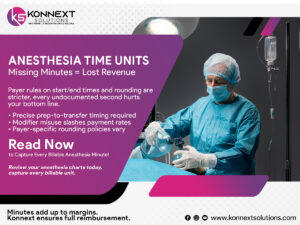Accurate billing and coding for orthodontic services is more than just a back-office function it’s the foundation of steady revenue, compliance, and practice success. Given the complexity of orthodontic treatment, proper billing practices are essential to avoid delays, denials, and reimbursement issues.
This comprehensive guide walks dental professionals through the key steps of successful orthodontic billing and coding, from eligibility checks to claim submissions and code usage.
Step 1: Verify Insurance Eligibility Before Treatment
Before beginning any orthodontic treatment, verifying the patient’s insurance eligibility is crucial. This step helps avoid coverage misunderstandings and ensures patients are fully informed about their financial responsibilities.
Key eligibility checks include:
- Is orthodontic coverage active and applicable?
- Are there age limits (child vs. adult)?
- What’s the annual or lifetime benefit maximum?
- Is pre-authorization required?
- Are aligners like Invisalign® covered or excluded?
We recommend using a standardized verification checklist for consistency. Be sure to document any waiting periods, coverage exclusions, and dependent eligibility clearly in the patient’s file.
Step 2: Submit Claims Using the ADA Dental Claim Form
For orthodontic procedures, the 2019 ADA Dental Claim Form is the industry standard. Ensuring accurate and complete submission helps minimize claim rejections and accelerates payments.
Key Sections to Complete:
- Patient & Subscriber Info(Boxes 1–23)
- Insurance & Provider Info(Boxes 24–52)
Orthodontic Details:
- Box 40– Is treatment for orthodontics? (Check Yes)
- Box 41– Date appliance placed
- Box 42– Total months of treatment
- Box 39– Radiographs or models enclosed (Usually No unless requested)
Document the Full Case Fee
Clearly indicate the total case fee, including diagnostics, appliance fittings, adjustments, and follow-ups. If a down payment is made, list the amount and date to show that financial arrangements are established.
Indicate Case Type
Specify whether the case is:
- Limited vs. Comprehensive
- Adolescent vs. Adult
- Include the malocclusion class(e.g., Angle Class II) for better payer understanding.
Step 3: Billing & Coding Breakdown by Visit Type
- Pre-Orthodontic Visit
Code: D8660 – Initial evaluation (often complimentary)
Optional: D9450 – Case presentation (if billed)
Ensure Box 40 is marked Yes on the claim form.
- Records Visit
Gathering diagnostics like impressions, photos, and cephalometric images.
Common Codes:
- D0350 – Intraoral and extraoral photographs
- D0470 – Diagnostic casts or scans
- D0340 – Cephalometric radiograph
Submitting these separately can expedite reimbursement and flag any insurance issues early.
- Treatment Start (Appliance Placement)
This marks the official beginning of treatment.
Codes by Case Type:
- D8030 / D8040 – Limited (adolescent/adult)
- D8080 / D8090 – Comprehensive (adolescent/adult)
Include total case fee, down payment, payment terms, and check:
- Box 40: Yes
- Box 41: Appliance placement date
- Box 42: Months of treatment
- Periodic Adjustment Visits
Used to document ongoing treatment and adjustments.
Code: D8670 – Periodic orthodontic treatment visit
Continue documenting Box 41 and 42 as needed for compliance.
- Retention Phase
Follows the completion of active treatment.
Code: D8680 – Orthodontic retention (often bundled in global fee)
Replacement retainers are typically patient-responsible:
- D8703 – Maxillary retainer
- D8704 – Mandibular retainer
Typical ADA Codes for Invisalign® Treatment
Understanding Invisalign billing starts with proper classification:
Limited Treatment
- D0810 – Primary dentition
- D8030 – Adolescent
- D8040 – Adult
Comprehensive Treatment
- D8070 – Transitional dentition
- D8080 – Adolescent
- D8090 – Adult
Importance of Supporting Documentation
To support claim approval, include:
- Detailed treatment plans(objectives, stages, goals)
- Narratives(for special cases or code justifications)
- Images or radiographs, if required by payer
- Progress notes, especially for long treatment cycles
Final Words: Billing Smarter with Konnext Solutions
Navigating orthodontic billing is no easy task. With so many variables—coverage types, treatment codes, documentation requirements—it’s easy to make costly mistakes. But with the right systems and expert support, your practice can stay compliant and financially sound.
That’s where Konnext Solutions steps in. Our specialized dental billing services help orthodontic and general dental practices:
- Improve coding accuracy
- Eliminate claim denials
- Reduce admin burdens
- Maximize reimbursements
We handle the complexity, so you can focus on patient care.
📞 Ready to Simplify Your Orthodontic Billing?




